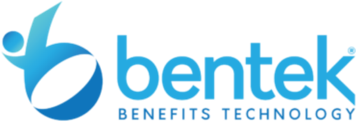In today’s world, it can be a struggle to keep pace with evolving employee expectations, rapid technological advancements, and changing market dynamics. With HR being at the center of all organizations, it is crucial to have the flexibility to adapt to the ever-changing landscape that is the modern workplace. To stay ahead of these challenges, many HR teams are altering their approach to work. One methodology that has been growing in popularity in recent years is Agile HR.
According to a recent survey from Gartner, 63% of respondents report using some variation of agile methods and principles within HR. But what exactly is Agile HR?
Agile HR is an innovative approach that adapts principles of the Agile software methodology to HR functions. Applying it to HR can revolutionize the way organizations manage their human capital, fostering greater flexibility, collaboration, and responsiveness. In this article, we will be exploring what Agile HR is and why it is growing in popularity for modern businesses.
Understanding Agile HR
Agile HR is an iterative and adaptive approach to managing human resources, inspired by the Agile software development methodology. Originally designed to enhance and accelerate software development and deployment processes, Agile principles have been applied to business applications beyond software development and successfully incorporated into other business areas, including HR.
At its core, Agile HR emphasizes flexibility, collaboration, and continuous improvement. It promotes a shift from traditional hierarchical structures to more cross-functional, self-organizing teams. Agile HR practices are designed to empower employees, encourage experimentation, and enable faster response times to changes in business needs.
To see what Agile HR is helping to accomplish, check out this article from Agile HR Community. It discusses how Netflix’s Talent Team has adopted this methodology to help the company grow across the globe.
Key Principles of Agile HR
Iterative Planning and Execution
Agile HR encourages HR professionals to break down complex projects into smaller, manageable tasks, known as “sprints” in the software industry. Each sprint is a time-bound period during which specific goals are accomplished, allowing for continuous feedback and adjustment. This iterative process ensures that HR teams can create and improve initiatives that are better aligned with evolving organizational requirements.
Collaborative Decision-Making
Agile methodology values the collective intelligence of employees and stakeholders. Cross-functional teams work together to solve problems, make decisions, and drive initiatives. By involving multiple perspectives, organizations can leverage the diverse skills and insights of their workforce, fostering innovation and engagement.
Adaptability and Flexibility
As we know, change is constant. HR processes and practices should be designed to respond quickly and effectively to evolving business needs. Agile HR encourages experimentation, risk-taking, and learning from failures, promoting a culture of continuous improvement.
Employee Empowerment
As HR professionals, we want to promote autonomy, self-organization, and efficiency among our employees. Agile HR encourages employees to take ownership of their work, make decisions, and contribute to the organization’s goals. This empowerment leads to higher levels of motivation, engagement, and productivity.
According to Zippia, projects using agile methods are nearly 1.5X more successful than traditional project management. With this type of improved success rate, it’s no wonder why 71% of U.S. companies are now using Agile!
Benefits of Agile HR
With so many companies turning to Agile methodologies because of the improvements in project efficiency and success, many companies have been reimaging how to use these processes for all areas of their organization. In an article from McKinsey & Company, they found a well-managed agile HR model enables:
- Critical talent initiatives are completed 75% faster with better outcomes and greater visibility
- 20% boost in employee engagement
- 25% more productivity
Agile HR has many benefits to harness, including:
Enhanced Responsiveness
Agile HR enables organizations to respond quickly to legislative changes, market demands, changes in employee expectations, and internal challenges. By embracing iterative planning and execution, HR teams can adjust strategies, policies, and practices in real time, ensuring they remain relevant and effective.
Improved Collaboration
The Agile methodology helps foster collaboration across different departments and levels of the organization. By breaking down silos and encouraging cross-functional teams, employees can work together to address complex problems, share knowledge, and drive innovation.
Increased Employee Engagement
Employees feel engaged and empowered when they feel involved. Agile HR encourages employees to take part in the decision-making processes, share their ideas and contributions, and provide opportunities for growth and development. This increased engagement leads to higher job satisfaction, reduced turnover, and improved overall performance.
Optimal Resource Allocation
Agile HR helps organizations allocate their resources more effectively. By regularly reassessing priorities and adjusting plans based on feedback, HR teams can optimize their efforts and focus on initiatives that deliver the greatest value to the organization.
Continuous Learning and Improvement
This strategy embraces a culture of learning and continuous improvement. Through regular feedback loops and retrospectives, HR teams can identify areas for growth, adapt their strategies, and enhance their overall performance over time.
Agile HR represents a new opportunity for you and your organization to shift your approach to Human Resources. By embracing the principles of flexibility, collaboration, and adaptability, your team can be enabled to navigate the challenges of the modern world with greater agility and resilience.
If you would like to read more articles about other developments in the HR world, check out the Bentek Blog!




